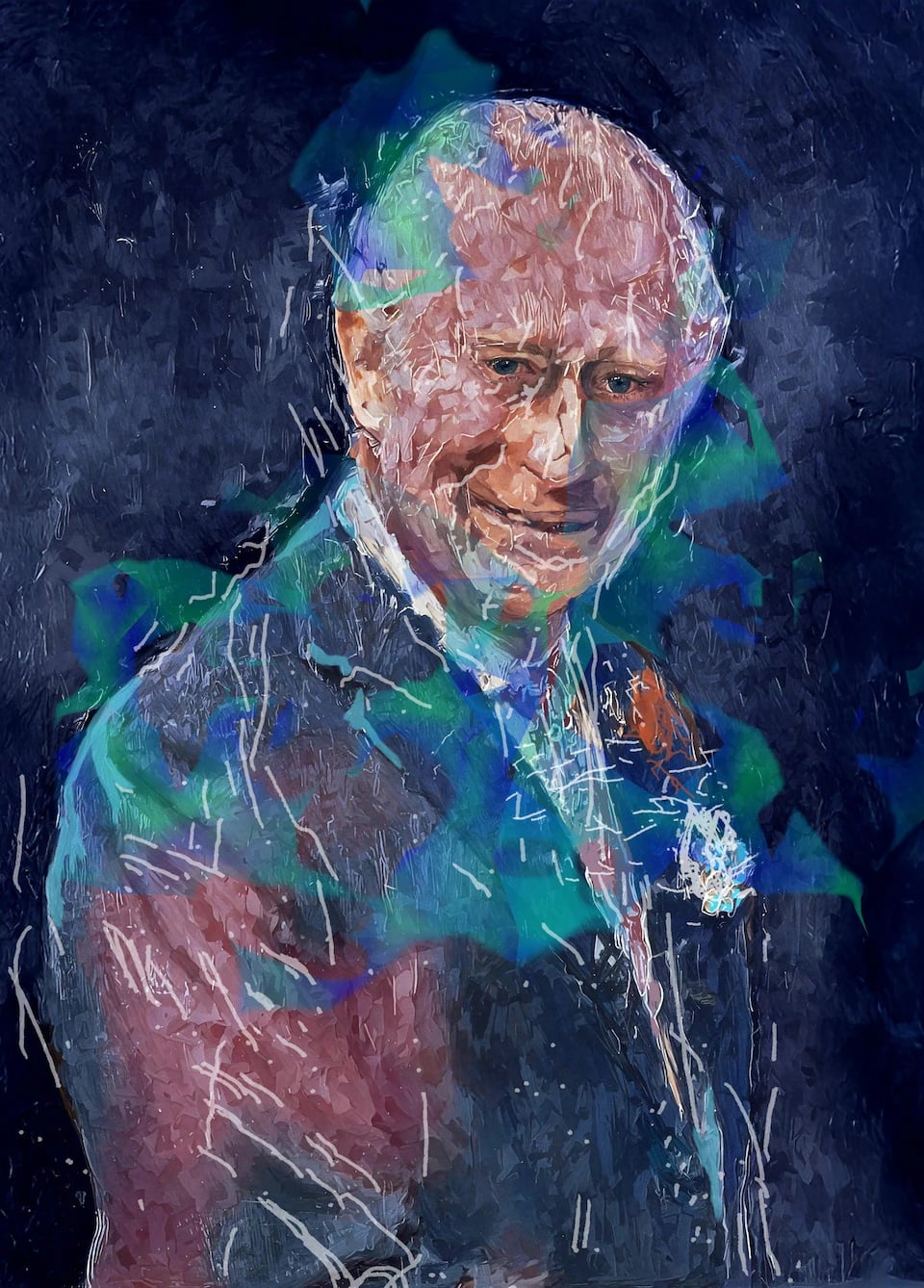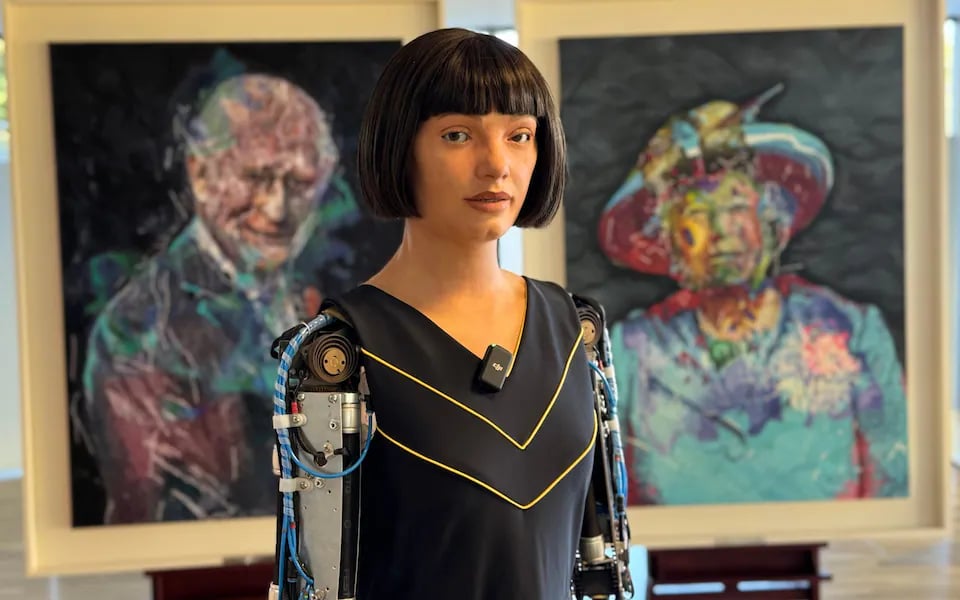The portrait of King Charles III, titled "Algorithm King," was painted by Ai-Da, a humanoid robot, with the assistance of AI. The artwork was unveiled in Geneva as part of this year’s "AI for Good" summit, held 8/7-11/7.
 |
The portrait of King Charles III - "Algorithm King." Photo: Ai-Da Robot Project |
The portrait of King Charles III - "Algorithm King." Photo: Ai-Da Robot Project
Ai-Da, the world’s first “ultra-realistic robot artist,” was designed in 2019 by British inventor Aidan Meller, built by Engineered Arts, and programmed by researchers at the Universities of Oxford and Birmingham. The robot was named after the 19th-century mathematician Ada Lovelace. It can create oil paintings using its robotic arm and engage in conversations through an advanced language model.
At the event, Ai-Da stated, “Creating a portrait of King Charles III is not just a creative act; it’s a statement about AI’s growing role in society and how it is shaping our cultural landscape.”
 |
The Ai-Da robot at the event. Photo: Ai-Da Robot Project |
The Ai-Da robot at the event. Photo: Ai-Da Robot Project
To create the finished painting, Ai-Da “combined robotic precision with algorithmic interpretation.” When presented with a subject, it uses cameras in its eyes to observe and then processes the visual data through AI models, making choices about shapes and color tones. The robot arm then translates these decisions into brushstrokes.
However, since King Charles III was not physically present, Ai-Da was shown multiple images of him. According to Meller, it produced preliminary sketches and then selected a representative image to focus on. It used AI to determine surface texture and levels of abstraction before adding details and brushstrokes to an enlarged version of the original sketch.
The robot's appearance and its artwork garnered comments and evaluations from diplomats and industry experts. Simon Manley, Ambassador and Permanent Representative of the UK Mission to the WTO, UN, and other International Organizations in Geneva, noted, “Ai-Da is not just a technological marvel, but a catalyst for cultural dialogue. We are proud to showcase this example of British innovation and to reflect on how technology shapes art, ethics, and identity.”
Ai-Da had previously established a name for itself in the international art world. Its works have been exhibited in various locations globally, including the Tate Modern, V&A, Somerset House, Design Museum, the Egyptian Pyramids, and the Venice Biennale. In 2024, Ai-Da sold a piece of its art for one million USD at Sotheby's.
Meller remarked, “Throughout history, great artists have reflected on their times. They have both celebrated and questioned societal changes. As a product of technology itself, Ai-Da is the perfect artist for our time to continue this discussion about the development of this field and its legacy.”
Khanh Linh (The Telegraph)











